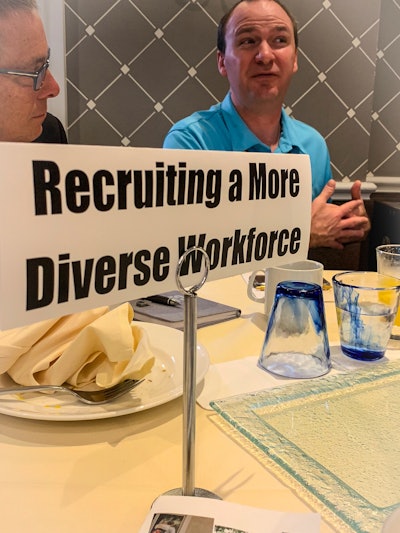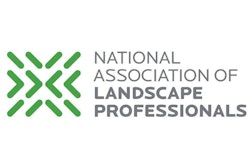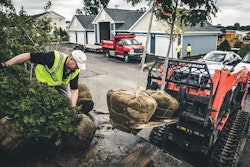
 Photo: Beth Hyatt
Photo: Beth HyattThis is part two in a three-part series. The final article will publish on TLC tomorrow. Click here to read part one.
Recently, the National Association of Landscape Professionals (NALP) hosted a Workforce Summit in Alexandria, Virginia, to address the increasing labor shortage facing the green industry today.
During this time, numerous green industry professionals gathered to discuss ideas and suggestions to help bring in a more diverse group of people to the industry, such as veterans, women, students and more minority groups.
Sarah Anderson, senior manager in the Tree Equity Program of American Forests, spoke to green industry professionals about the importance of diversity in the landscaping industry, and offered some ideas as to how you can work to make your landscaping company a more welcoming place to these underrepresented groups.
Where to look
When it comes to diversifying your workforce, Anderson says it’s important to take a look at underrepresented groups, such as people of color, women, veterans, disabled people and more.
“Often, these people are unemployed or underemployed, and they are overlooked for types of investment,” she says. “Maybe it’s because they haven’t been introduced to those kind of bridging opportunities, like apprenticeships and more.”
The current targeted demographic Anderson says they’ve been focusing on is people ages 18-24, also known as Generation Z. This key population, she notes, is known as the opportunity youth.
The question Anderson posed to those gathered was, now that we know the target demographic, where do we find these opportunity workers? One place she highly recommended was in local non-profit organizations.
“Nearly all non-profits across the country have some kind of active engagement programing to introduce natural resources to opportunity workers, or they have actual crews that take on this service work,” she says. “We think these are the perfect folks we can mine for talent and start to recruit and transition into the private and public sector.”
When looking for potential talent, Anderson says to take a look into programs like apprenticeships, pre-apprenticeships, job-training programs and tree and landscaping crews. She also recommends getting involved in local resource non-profits that are run by the previously mentioned programs, as well as serving on employer advisory boards and committees, informal advisory roles and board services.
Multicultural companies
When looking to diversify your team, Anderson recommends always keeping in mind that employees want to see themselves represented in your company before they come aboard.
Simply put, if you don’t have a strong presence of women in authority and work crew positions, you will have a difficult time hiring women. If you don’t have any or many people of color in authority or work crew positions, you will have a difficult time recruiting people of color to your team.
“People need to see themselves reflected,” she says. “Multicultural companies are successful because they are built on trust and evidence. If you’re trying to convince me to come and work for you and I don’t see any evidence that you’ve hired someone like me before or promoted someone like me before, then why would I consider working for you? I wouldn’t.”
Anderson noted that 75 percent of white Americans have entirely white social networks. This, she says, isn’t necessarily a bad or good thing, but it does hinder you from being able to form trust with a population other than what’s represented on your social network.
“This is where partnering with non-profits that have access to these target populations and are actively cultivating relationships, interests and education around natural resources is so critical,” she says. “Make sure when you’re approaching opportunity workers, you’re coming with a message that’s authentic because it was informed by somebody who is in that group.”
Along with feeling that they are well-represented, Anderson says these opportunity workers also want to know their co-workers have their best interest in mind when working out in the field, talking with clients, operating heavy machinery, etc.
Retention
Anderson notes that based on what she’s seen in the workforce, multicultural companies have a much easier time recruiting and retaining their workers.
“If I have a great experience, I’m going to go tell my friend and they’re going to go tell their friend,” she says. “Honestly, that’s how a lot of the hiring gets done. A lot of times, we want to formalize the hiring practices, but when you book a job and need somebody next week to start, who are you reaching out to? You’re calling the people on your crew telling them to tell their friends.”
Retention happens, Anderson says, when workers are rewarded for their continued professional growth and their investment in the work they are doing over time.
“Companies that work through challenges transparently and inclusively are successful,” she says.
Ensuring that your company spells out a clear pathway for growth and professional development, as well as facilitating opportunities to network, will show your employees you are invested in their growth and well-being, and it offers them the chance to talk with employees in other areas to share problem solving methods.
Anderson says that according to research performed by McKinsey & Company, ethnically diverse companies are 35 percent more likely to outperform the industry median.
“The folks that you bring in that feel included, heard and appreciated will not only perform well and stay and tell all of their friends about the great opportunities, they are also going to give you critical, good feedback on your products and services that maybe you didn’t have access to before.”
Check back tomorrow for part three of this series, where we’ll focus on efforts you can make to attract more women to the green industry, as well as understanding the terminology associated with a diverse workforce.










